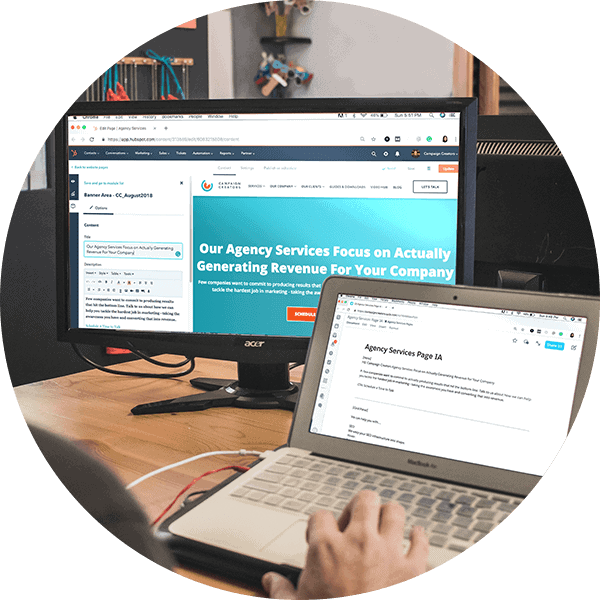
Understanding Semantic Search and How It Affects Search Engine Marketing
November 12, 2018
6 Technical SEO Factors You Can’t Afford to Get Wrong
December 5, 2018If you’ve taken the first step of investing in marketing automation software, you’re going to be interested in how well that investment is working out. If you haven’t, check out our post about marketing upgrades that can increase your revenue.
Many businesses dive headfirst into using marketing technology and realize after the fact that they don’t actually know what success looks like, or how they should be measuring it.
So let’s look at 8 key digital marketing metrics for property development companies that can provide strong insight into the effectiveness of your marketing investment.

Total Sessions by Campaign
The number of sessions (traffic) you receive to your company’s website is one of the more basic metrics that you can track to provide a high level view of how your site is performing. However, not all sessions are created equal and the first three metrics we’re going to look at will provide a much deeper understanding of both the effectiveness of your marketing, and your website.
Marketing technology has made it much easier to organize our marketing content into separate campaigns. For example, if you want to target executives in the healthcare industry, you could optimize a specific body of content that includes articles, emails, paid ads, and social posts to serve and inform that persona directly.
Sessions by campaign breaks down your traffic from all sources and gives you a clear idea of which campaigns are getting attention. With that information, you can focus your efforts on driving attention to low-volume campaigns or improving the conversion rates of campaigns that have good traffic. Without these detailed breakdowns, you can only look at the final results and assume where things are going right or wrong.
Total Sessions by Channel
Another session metric to look at is sessions by channel. The most common channels are organic, direct, paid, email, social, and referral. Looking into your sessions by channel sheds light on how users are getting to your website, and which channels are the most effective and providing the biggest bang for your buck.
- Organic – Visitors who Google a phrase and find your site in the search results
- Direct – Visitors who type in your url directly in the browser or visit via bookmark
- Paid – Visitors who clicked on a Google Ad linking to your website
- Email – Visitors who clicked a link in your email blast
- Social – Visitors who land on your site after clicking a link on any social media platform
- Referral – Visitors who arrive via clicking a link on any site that is not your own
Total Sessions by City
When measuring website visits, sessions by city is extremely important for property developers to know. Sessions by city is essentially showing you what geographical areas are generating organic traffic to your website.
Sessions by city ends up being an excellent metric for tracking your digital presence in a region compared to your competition. It can also be useful for measuring the effects of demand generation strategies that focus on specific regions or cities.
Percentage of Return Visits
In the property development business, it’s pretty rare to sell a project or win a bid on the first interaction. It may happen occasionally, but more than likely you’re going to have several points of contact with someone before they commit to a purchase.
In situations where the sales process is very long, tracking the percentage of visitors that return to your website is like keeping your finger on the pulse of your website. A high percentage of returning visitors vs. new visitors is a strong indicator of the overall health of your digital presence.
Referring Sites
The referring sites or referrals metric is important to track for a number of reasons:
- External links are a significant factor in your overall domain authority, which helps your site to rank higher in search engines. You want to monitor the quality of those external links, because links from quality sites will lift you up and links from disreputable sites will drag you down.
- Tracking referrals is one of the few ways we have of measuring the intent of your traffic. When you track referrals, you can see exactly where the visits are coming from and why they were sent to your site.
- Referring sites are an indicator of your reputation.
New Email Contacts (by list/campaign)
Email is an excellent tool that every business should be using to engage with their prospects and customers. Marketing automation platforms have made it easier than ever to manage detailed and effective email campaigns. There are 3 specific metrics related to email that property development companies ought to be looking at.
The first of these metrics is new email contacts. A healthy flow of new email contacts means that people are interested in what you have to say. As those contacts roll in, you need to be carefully segmenting them into smart lists, based on your own buyer personas or campaigns so that you’re providing them with the best possible content for their situation.
Tracking these new email contacts by segmented list will give you a clear picture of which personas or campaigns are generating more interest.
Email Open Rate (by list/campaign)
Second, email open rate is a metric that speaks to the relevance of your email topics and the overall health of your email lists. According to Constant Contact, 16.86% is the 2018 average for the real estate industry. Open rate is largely a function of your email subject lines. The higher your email open rate, the more interesting the recipients found the subject. Drill down even further and compare the open rates of your different campaigns and email lists to get the best idea of what topics are most interesting to your prospects.
Email CTR (by list/campaign)
Lastly, the click-through rate is the percentage opened emails that resulted in a clicked link. Constant Contact shows 5.76% as the industry average. This metric is an indicator of how engaging your recipients find the email content to be. You’ll want to track specific links in your emails and use that information to further refine your list segmentation, if possible.
The huge amount of analytics data from even a single tool, like Google Analytics, can be intimidating. It’s important to remember that you only need to track those metrics that speak to your specific growth and revenue goals — and those metrics may or may not be on this simplified list.
If you need help making sense of your marketing data or want to partner with a company that can help you increase your marketing ROI, lets talk.








